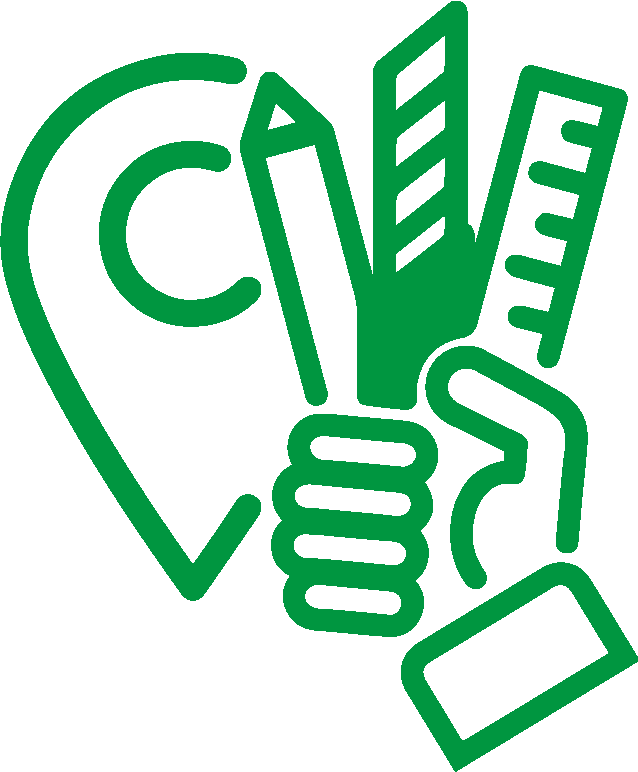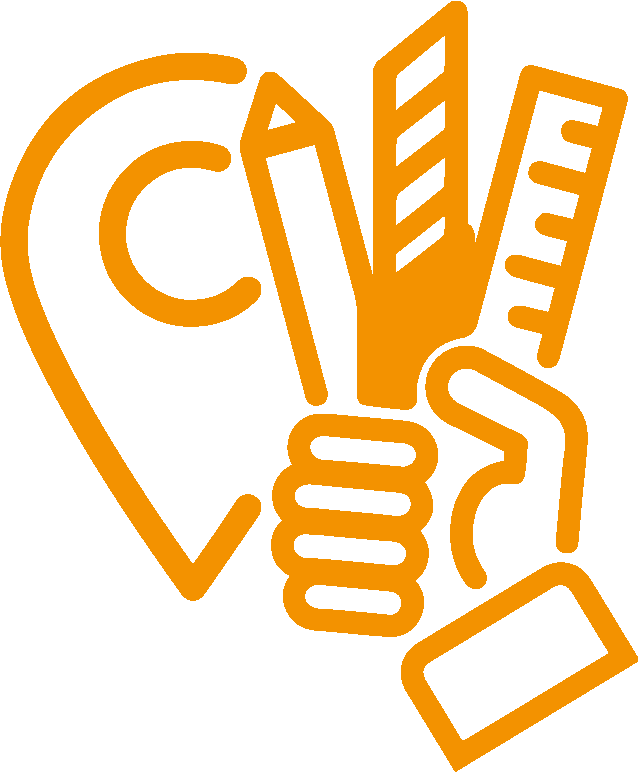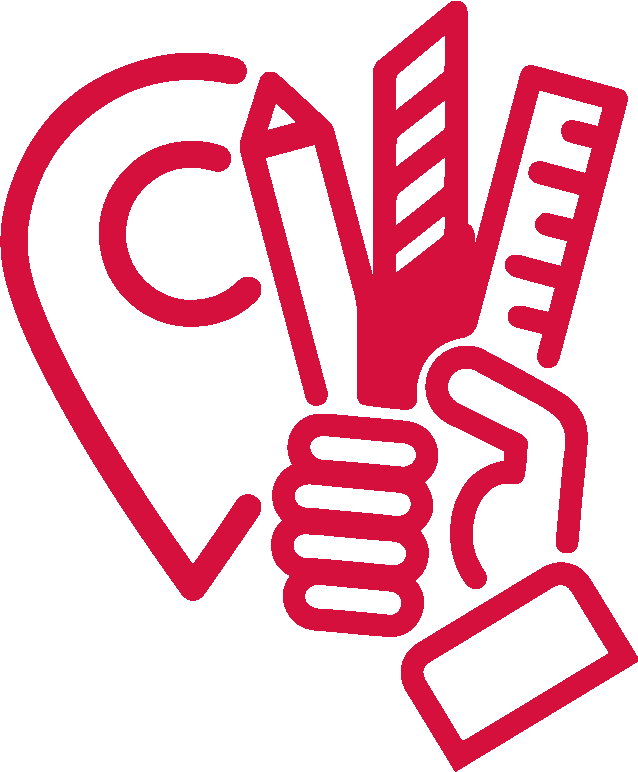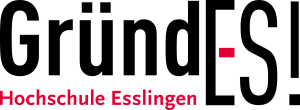FDM DRUCKER:
The Ultimaker S5 is ideal for creating prototypes, tools and finished tools, with its big build volume (33 x 24 x 30 cm) and dual extruder. The latter allows for water soluable support structures.
Technical Data:
|
Print volume
|
330 x 240 x
300 mm
|
|
Filamentdiameter
|
2,85mm
|
|
Printing technology
|
Fused Deposition
Modeling (FDM, Schmelzschichtverfahren)
|
|
Printhead
|
Dual extruder
|
|
Printcores
|
interchangeable
|
|
Available nozzle diameters
|
0,4 mm; 0,8
mm;
|
|
Nozzle temp
|
Up to 280°C, independantly set
|
|
Printbed
|
Glass bed heated up to 140°C
|
|
Interfaces
|
WLAN, USB
|
|
Supported slicer-filetypes (Cura)
|
STL, OBJ, X3D,
3MF, BMP, GIF, JPG, PNG
|
|
Supported printfile formats
|
G,
GCODE, GCODE.gz, UFP
|
|
Compatible nozzles
|
AA 0.25, 0.4,
0.8 mm / BB 0.4, 0.8 mm / CC 0.6 mm
|
|
Layer heights
|
0,25mm Düse:
0,05 mm – 0,2 mm
0,4mm Düse: 0,06 mm – 0,36 mm
0,6mm Düse: 0,15 mm – 0,48 mm
0,8mm Düse: 0,2 mm – 0,64 mm
|
|
Extruder technology
|
Two feeders with double gearing, Bowden filamenttransfer system
|
|
Printhead leveling
|
Active progressive Bed levelling
|
When choosing a filament it is very important to pay attention to the filament diameter. Unlike most desktop printers this Printer uses Spools with a diameter of 2.85mm.
compatible software
The compatible slicer, Ultimaker Cura (Open-Source) can be downloaded from the manufacturer's website.
🔗Ultimaker
Cura Download
Alternatively, any other slicers can be used that can create GCODE files.
Technical Data

|
Druckbauraum
|
250 x 210 x 210 mm
|
|
Filament diameter
|
1,75mm
|
|
Printing technology
|
Fused Deposition Modeling (FDM,
Schmelzschichtverfahren)
|
|
Printhead
|
|
|
Printcore
|
Single, non-interchangeable
|
|
Available nozzle diameters
|
0,4 mm
|
|
Nozzle temp.
|
up to 300°C
|
|
Printbed
|
Up to 120°C, flexible PEI Steel sheet
|
|
Interface
|
SD card
|
|
Supported Slicer filetypes
(PrusaSlicer)
|
STL, STEP,
3MF, OBJ, and AMF.
|
|
Supported printformats
|
G, GCODE, GCODE.gz
|
|
Compatible nozzles
|
0,2 mm – 1 mm
|
|
Supported Layer heights
|
0,25mm nozzle: 0,05 mm – 0,2 mm
0,4mm nozzle: 0,06 mm – 0,36 mm
0,6mm nozzle: 0,15 mm – 0,48 mm
0,8mm nozzle: 0,2 mm – 0,64 mm
|
|
Extruder technology
|
Direct Drive Bondtech Prusa
Extruder
|
|
Print bed levelling
|
Active Printbedlevelling with SuperPinda Sensor
|
Appropriate software
For the Prusa Ultimaker's Cura can be used. It is very important to select the right printer - Prusa I3 Mk3S - otherwise the slicer will not take into account the nozzle's individual height relative to the SuperPinda.
Alternatively, Prusa's own Slicer, PrusaSlicer, can be used.
🔗Ultimaker Cura Download
🔗PrusaSlicer Download
Our materials for different uses:
- PLA (PolyLacticAcid) is characterized by its ease of use, high tensile strength and smooth surfaces, making it perfect for high-definition prototypes with high aesthetic detail.
- Tough PLA is perfect for large technical prints - just as safe and easy as standard PLA, but with lower chance of delamination occurring in bigger prints.
- ABS (Acrylnitril-Butadien-Styrol) can handle temperatures up to 85°C, and has the perfect qualities for complex functional prototypes, however it is very susceptible to warping.
- Nylon offers high tensile strength, resistance to environmental forces and wear, and low friction. It's safe to use at temperatures of up to 80°C, and is perfect for functional parts such as gears and hinges.
- PVA (PolyVinylAlcohol) is a water soluable support material, which can aid in printing parts with complex geometries, hollow spaces and large overhangs. (Please only use this as Material 2)
- Breakaway is a support material, which is easily removeable and leaves smooth surfaces, allowing for high tolerances.
Preparation:
Before you can use one of the printers, you must participate in a training (safety briefing and introductory course). Afterwards you can familiarize yourself independently with the free slicer Cura, and start your first print right away.
Resin Printer:
General info:
A Resin printer works completely differently than a conventional FDM printer. They use liquid resin specifically developed for printing, which is then exposed to UV light in a specific pattern, hardening it precisely.
This leads to higher definition in the finished parts than most FDM printers can achieve, but depending on the dimensions the print can take much longer.
Working with a resin printer is far more complex, and time consuming than FDM printing, which is why only GründES employees are allowed to do it.
Technical Data:
|
print volume
|
197 x 122 x 245 mm
|
|
UV-frequency
|
405nm
|
|
Exposure screen
|
9,25 inch 6K LCD
|
|
Print speed
|
Up to 100mm/h
|
|
Bed leveling
|
4 point, manual
|
|
Printbed
|
Laserengraved Printbed
|
|
Interface
|
USB, WLAN
|
|
Manual 4-point adjustment
|
Material:
Many possibilities. It is important to differentiate between water washable and normal, as washing the part is a crucial step in finishing it.
Generally parts are more brittle than FDM prints, however there are Elastomer and soft resins available.
Best Practices:
Jeder dieser Geräte hat seinen Einsatzbereich, in welchem er am besten ist. Dieser beinhaltet Konstruktions- / Geometriearten, Einstellungen, Materialien und Nutzungsweisen. Hier findest du eine kurze Zusammenfassung zu den Geräten und deren bevorzugten Einstellungen und Handhabungen:
Generell:
- Wenn später Schrauben o.ä. eingebaut werden sollten die Löcher im CAD im Voraus eingefügt werden - nach dem Druck ins Teil zu bohren ist oft schwierig, weil durch den Infill Hohlräume entstehen.
- Bohrlöcher sollten Vertikal, nicht horizontal gedruckt werden, damit die Kreisform erhalten bleibt.
- Wenn die Bohrlöcher horizontal gedruckt werden müssen sollte man sie etwas unrund machen, den oberen Abschnitt etwas frei räumen, damit das Loch später wieder Rund wird.
- Immer drauf achten dass man im CAD schon eine große flache Oberfläche hat die als Druckoberfläche verwendet werden kann.
- Möglichst wenige Überhänge designen.
- FDM Druck ist anisotrop, die Teile sind in Z-Richtung weniger auf Zug belastbar als in die anderen Richtungen.
Ultimaker S5:
- Durch seine zwei Düsen ist der S5 der Einzige Drucker in unserem Stall, der zwei verschiedene Materialien, Farben, oder Linientypen in einem Bauteil verwenden kann.
- Der große Bauraum ist natürlich besonders günstig für größere Teile
- Bei PLA in einer 0,4mm Düse sind Druckgeschwindigkeiten zwischen 50 und 80 mm/s top, für Infill kann die Geschwindigkeit auf 100mm/s aufgedreht werden, die erste Schicht sollte bei <50 mm/s gedruckt werden.
- Mit einer 0,8 Düse muss man die Geschwindigkeit stark reduzieren, dafür kann die Schichthöhe und Linienbreite vergrößert werden.
- Die Glas Bauplatte bietet extreme Haftung - wenn sie sauber ist - und sollte vor allem bei großen Bauteilen immer mit Kleber beschichtet werden.
- Bei zu niedriger Haftung durch ungünstiger Geometrie sollte ein Brim oder im Extremfall sogar ein Raft eingesetzt werden.
- Für Temperaturreferenzen schaue dir die Temperature Towers an. Diese wurden alle in 0,2mm schichthöhe mit 100% Lüftung und 75 mm/s gedruckt.
- Tree Supports sind vielfältig einsetzbar, sparen stark Filament ein, und können die Oberflächen des Bauteils schützen.
- Für bei der Nachbearbeitung schwer erreichbare Supports kann man als Material 2 PVA verwenden, dieses Filament ist theoretisch wasserlöslich, muss aber in Realität in warmem Wasser gebadet und geschruppt werden.
- TPU kann mit dem S5 gedruckt werden, benötigt aber viel Geduld, niedrige Druckgeschwindigkeiten, und hohe Retraction.
- Infill: Es gibt viele Infillarten, alle mit ihren eigenen Vorteilen. Gyroid bietet gute Lastverteilung, Lines ist nicht stark, aber ermöglicht es wenig material zu verwenden, indem es eine größere Fläche bietet für die Oberschicht, wodurch diese schöner aussehen können.
- Die Stabilität eines Bauteils kommt größtenteils aus den Walls, für stärkere Bauteile kann man also die Außenwände dicker machen.
- Bei dickeren Wänden kann man den Infill verringern, das kann vor allem bei kleineren Bauteilen die Druckzeit senken, bei großen Bauteilen aber die Stabilität senken.
Prusa I3 Mk3S:
- Der Prusa ist langsamer als der Ultimaker, die Druckgeschwindigkeit sollte insgesamt nicht über 75 gehen.
- Überhänge sehen am Prusa sehr gut aus, der Winkel kann in manchen Fällen sogar bis 60° erreichen.
- TPU kann im Prusa momentan nicht gedruckt werden, dazu wird eine andere Bauplatte benötigt.

 Green:This step follows the general safety rules set by the WstO. With this level of authorization students are allowed to enter the MakerSpacES! and work at the available workspaces. Usage of tools or machines of any kind is prohibited, however using simple items like scissors, glue or a hammer is allowed. This level is reached with a simple introduction to the workshop.
Green:This step follows the general safety rules set by the WstO. With this level of authorization students are allowed to enter the MakerSpacES! and work at the available workspaces. Usage of tools or machines of any kind is prohibited, however using simple items like scissors, glue or a hammer is allowed. This level is reached with a simple introduction to the workshop. Yellow: After a completed safety briefing (e.g. the correct handling of the machines) students have reached the yellow level. This means they can use for example: powerdrills, saws, soldering irons, microcontrollers, etc.
Yellow: After a completed safety briefing (e.g. the correct handling of the machines) students have reached the yellow level. This means they can use for example: powerdrills, saws, soldering irons, microcontrollers, etc.  Red: Students who want to reach level red to work with machines like the 3D-printers, the plotter, the transferpress, or the lasercutter, must absolve an introductory course to the respective machines. To find these introductory courses you must be signed in to our 🔗Moodle-Kurs
Red: Students who want to reach level red to work with machines like the 3D-printers, the plotter, the transferpress, or the lasercutter, must absolve an introductory course to the respective machines. To find these introductory courses you must be signed in to our 🔗Moodle-Kurs 
